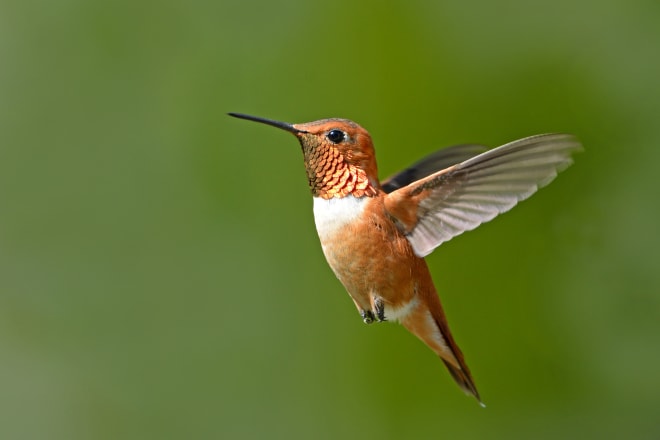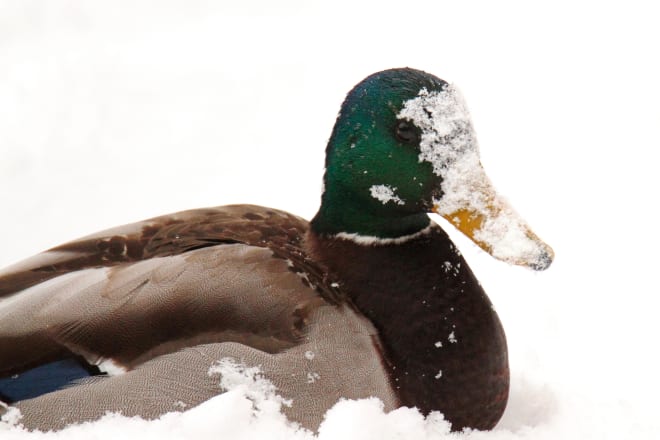Kamloops has a range of habitats that attract many bird species throughout the year. Grasslands, wetlands, rivers, and forests create an environment where birds thrive. Birdwatching in this region offers sightings of raptors, waterfowl, songbirds, and migratory species. Knowing where and when to look increases the chances of seeing specific birds.
Kamloops' Bird Habitats and Seasonal Changes

Kamloops has varied landscapes that support different bird populations. The region includes sagebrush grasslands, riparian zones, wetlands, and forested hills. These habitats change with the seasons, influencing bird activity. Some species stay year-round, while others migrate through or arrive to breed. Spring and fall migrations bring an increase in bird numbers.
Winter months offer sightings of hardy species like woodpeckers and owls. Spring sees the arrival of warblers, flycatchers, and swallows. Summer is the breeding season for many birds, including meadowlarks and raptors. Fall marks the migration of waterfowl, shorebirds, and birds of prey. Each season provides opportunities to observe different species.
Waterfowl and Where to Find Them
Kamloops' lakes, rivers, and wetlands attract many waterfowl. Canada Geese and Mallards are common throughout the year, often seen in city parks and along the Thompson River. Buffleheads arrive in the winter, preferring deeper waters. Northern Shovelers and Cinnamon Teals appear in the spring, feeding in shallow ponds.
McArthur Island Park and Albert McGowan Park are reliable spots for ducks and geese. Tranquille Wildlife Management Area provides access to marshes where more elusive species, such as Ruddy Ducks and Redheads, can be found. Lac du Bois Grasslands contains seasonal wetlands that attract waterfowl during migration periods.
Raptors: Birds of Prey in Kamloops
Kamloops has open spaces where raptors hunt. Red-tailed Hawks are common, often perched on fence posts or soaring over fields. Bald Eagles follow the salmon runs, particularly along the Thompson River. Northern Harriers patrol the grasslands, flying low in search of prey.
The Lac du Bois Grasslands is a reliable location for raptors. The ridgelines and open fields provide hunting grounds for hawks and falcons. Bald Eagles are often seen near rivers and lakes. Great Horned Owls inhabit wooded areas, calling at dusk and perching in large trees.
Songbirds: Common and Seasonal Visitors
Grasslands and forests in Kamloops support many songbirds. Western Meadowlarks are present in open fields, their calls heard in the warmer months. Yellow-headed Blackbirds prefer marshy areas, their bright colours making them easy to identify. Flycatchers and warblers arrive in the spring, foraging in wooded areas.
Tranquille Wildlife Management Area and Lac du Bois Grasslands are good places to look for songbirds. Parks with trees and shrubs, such as Riverside Park, attract warblers and other small birds. Migratory flocks pass through in the spring and fall, increasing the diversity of species.
Unique and Uncommon Sightings
Some bird species appear in Kamloops only occasionally. The American Avocet is a rare visitor, sometimes spotted in shallow wetlands. Sharp-tailed Grouse inhabit the grasslands but are difficult to find due to their camouflage. Bohemian Waxwings arrive in large flocks during the winter, feeding on berries in urban areas.
Observing uncommon birds often requires patience. Checking eBird reports or speaking with local birdwatchers provides recent sightings. Exploring different habitats at various times of the year increases the chances of seeing rare species.
Best Birdwatching Locations

Tranquille Wildlife Management Area
This area near the Kamloops Airport contains wetlands, grasslands, and riparian zones. The mix of habitats supports a wide variety of birds throughout the year. Hummingbirds, swallows, and warblers are common in the spring and summer. Raptors patrol the skies, and waterfowl are present in the marshes. Boardwalks and trails provide access to different areas, making it possible to observe birds from multiple vantage points.
McArthur Island Park
An urban park with ponds, open fields, and wooded sections. Ducks and geese gather in the water areas year-round, while migratory birds stop here during the spring and fall. Warblers and flycatchers are frequently seen during migration seasons. Beavers and otters are sometimes spotted near the water, adding to the wildlife experience. Well-maintained trails make it easy to explore different sections of the park.
Lac du Bois Grasslands Protected Area
An expanse of rolling grasslands north of Kamloops. The open landscape provides excellent opportunities to observe raptors hunting over the fields. Sharp-tailed Grouse display in the spring, performing their unique courtship dances. Shorebirds visit the seasonal wetlands, making certain times of year especially productive for birdwatching. The terrain varies from open grasslands to small lakes, offering diverse bird habitats.
Albert McGowan Park
A suburban park with a pond that attracts ducks and other waterfowl. Buffleheads, Redheads, and Lesser Scaup appear once the ice thaws in April. Songbirds use the surrounding trees and shrubs for nesting and foraging. The park's relatively small size makes it easy to cover on foot, making it a good choice for a quick birdwatching outing.
Birdwatching by Season

Spring (March to May)
Migratory birds arrive, increasing the diversity of species. Warblers, flycatchers, and swallows move through. Waterfowl numbers peak, with Northern Shovelers and Cinnamon Teals appearing in wetlands. This is an active season for birdwatching, as many species establish territories and begin nesting.
Summer (June to August)
Many species breed in Kamloops. Raptors raise their young, and songbirds build nests in grasslands and forests. Hummingbirds visit flowering plants, taking advantage of seasonal blooms. This is also a good time to see juvenile birds as they fledge and learn to forage.
Fall (September to November)
Shorebirds and waterfowl migrate south. Raptors follow ridgelines, taking advantage of air currents. Songbirds form mixed flocks, feeding before migration. Changes in foliage and weather patterns make birds easier to spot, as they concentrate around food sources before departing.
Winter (December to February)
Resident birds remain active. Steller's Jays, woodpeckers, and owls are present. Open water areas attract ducks and geese that do not migrate. With leaves off the trees, it becomes easier to spot birds that remain in the region year-round.
Birdwatching Tips

Best Practices
Bird activity is highest in the early morning and late afternoon. Binoculars help with identifying species at a distance, and staying on trails prevents disturbance to birds and habitats.
Local Resources
The Kamloops Naturalist Club provides information and organizes birding events. Local tourism offices and online birding platforms offer checklists and recent sightings. Keeping a journal or using birding apps helps track observations.
Conclusion
Kamloops offers birdwatchers a variety of species to observe throughout the year. The region's mix of grasslands, wetlands, forests, and rivers supports both resident and migratory birds, making it a rewarding destination for enthusiasts. Seasonal changes bring shifting bird populations, providing new opportunities for sightings with each visit.
Understanding the best locations and times of year for birdwatching increases the likelihood of spotting specific species. With patience, local knowledge, and the right equipment, birdwatchers in Kamloops can enjoy a diverse and ever-changing array of avian life.


